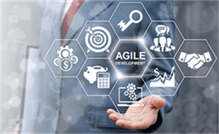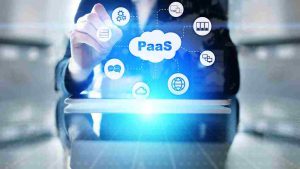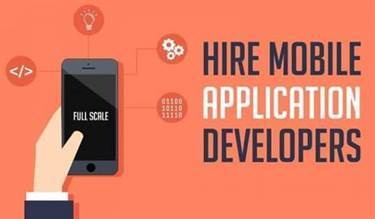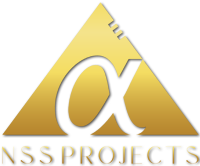Содержание
In recent years, many businesses have implemented cloud-based ERP solutions to gain additional workplace mobility due to an increase in demand for remote or work-from-home opportunities. Through these accessible systems, workers can log-in from anywhere and still get their What is ERP work done without interruption. ERP provides ways to improve communication outside your business with vendors and suppliers. You can also use customer relationship management tools to schedule external customer interactions, like quote follow-ups and lead tracking.
The company had thousands of systems but could not keep pace with its rapid growth and used ineffective warehouse management systems. Oracle Corp. originally supplied a relational database that integrated with ERP software developed by SAP before entering the broader enterprise market in a big way in the early 2000s. Then, the hosting company loads the applications onto the server the client is renting, and both parties begin working to integrate the client’s processes and data into the platform. ERP solutions have evolved over the years, and many are now typically web-based applications that users can access remotely.
They must have a keen sense of observation and imagination, and should be able to identify any issues that their department may face. Your organization must have collected heaps of data prior to implementation of ERP. All of this data has to be fed into the system but in a certain format. For this, you may need to tweak and rearrange your data and prime it for migration into the new software.

ERP Systems and software support multiple functions across the enterprise, mid-sized, or small businesses, including customizations for your industry. GEP NEXXE is a unified and comprehensive supply chain platform that provides end-to-end planning, visibility, execution and collaboration capabilities for today’s complex, global supply chains. Built on a foundation of data, artificial intelligence and cognitive technologies, GEP NEXXE helps enterprises digitally transform their supply chains and turn them into a competitive advantage.
The architecture is thus distributed between the two infrastructures, but the users can control and manage the Hybrid ERP centrally. In case of an update or major issue, the organization needs to wait for the vendor’s team to arrive at their facility and make the system start functioning again, which derails their day-to-day activities. On-Premise ERPs, also known as legacy/monolithic ERPs, are installed in the organization’s hardware present at their facilities.
Guide To Customer Relationship Management Process
The components of an ERP system depend on the organization’s needs. Generally, packages include finance, human resource, logistics and manufacturing, supply chain management, and customer relationship management. With access to these new technologies, organizations can quickly improve their business best practices as the ERP software evolves. They can automate processes that used to require heavy manual intervention, such as reconciling financial accounts.

With our 30 plus years of experience, our team has the industry knowledge to get you on the road to success. Contact us to let our experts help you determine if ProcessPro is the right solution for your company. People will know how to use their part of the ERP system, without spending time looking for information in other places. Everything they need for their job is accessible, without any unused files or folders to clutter up their processes. Instead of taking up weeks of time prior to every audit, your accounts or quality management teams can provide complex audit trails within a day.
Manufacturers are seeking out ERP solutions to incorporate applications when they lack a unified system or to replace legacy systems that are no longer profitable. The major benefit of an ERP is the process integration which allows the workflow to become more streamlined, costs to be reduced and efficiency to grow. Also, by having data collected from across the entire business, an ERP can help speed up reporting with ease and increased accuracy. Access to this data helps everyone in the company make better-informed decisions. Through manufacturing, an ERP system can help you provide enhanced customer service.
Transition Planning
Look to established vendors with proven records of success working with companies in your vertical. Always ask for reference customers, and check out success stories. Third, if a connector exists, does it operate in real time and keep all necessary data flowing to and from each system? Some connectors operate in real time, others sync up systems on a daily or weekly basis. Some move only a limited set of data between systems, and some work in only one direction — say, from an inventory management system into the ERP. If your team has done extensive custom configurations, some data types might not be known to the connector.

This data can be used to improve the way resources or procedures are being carried out, which eventually helps in maximizing the growth of your business. You can easily pinpoint areas or procedures which may be underperforming and may require some special attention and help to bring them up to the mark. With all data in one place, you save up on a lot of precious time, which you can utilize in making changes to your business strategies.
For example, if a sales team-member has marked an order as closed or canceled, specialists of delivery and storage services will be able to see it right away. All ERP systems, regardless of who developed them, have the same or similar development environment, database, and modules. While ERP systems are complex and multifaceted, their biggest advantage is that by connecting all aspects of a business in one business management system, it is very efficient.
Things To Consider To Ensure Erp Upgrade Success
Companies across every industry, with diverse business models, have realized the benefits that come with ERP. Flexible solutions with extensive functionality can cater to a wide variety of organizations and requirements. A unified platform, on the other hand, offers native integrations between modules and a common user interface as users move between them. Information easily flows between modules to give decision-makers a comprehensive view of the company. ERP software can be used in any industry to help a business become more efficient. Continual support, updates, training, and flexible customizations supported by the software provider.

Next-generation technologies, like artificial intelligence , help cloud-based systems rapidly improve their capabilities with no need for periodic updates, unlike your legacy system. Now, with no additional or new input from the end-user, ERP systems continually become significantly easier to manage and use. ERP also ensures that these data fields and attributes roll up to the correct account in the company’s general ledger so that all costs are properly tracked and represented. For these types of financial reports, a narrative reporting tool is used. The person who is ultimately responsible for financials is the CFO. Data migration to an ERP system is challenging in the implementation process that required complete preparation and proper planning.
It can manage the entire supply chain and let you respond faster to market conditions. The gathered data can allow you to estimate future resource requirements and calculate optimal reorder points. It’s crucial to understand what is supply chain management to better understand this method.
How Is Erp Implemented?
Even after implementing the ERP, ask the users to provide you the feedback and keep fixing the bugs that they encounter. However, you can easily automate your data transfer once you’ve set the parameters of migration. This will save up a lot of time and make your database a lot more efficient. While putting together a team for ERP implementation, make sure you select the right candidates for each role. Keep in mind that this is perhaps the most important project for your company’s survival and growth, and create a team of your best henchmen.
- A few of their satisfied clients include the Zwilling beauty group, Honda and Citadelle.
- The next generation of young workers have grown up with seamless technology that is mobile, easy to use, and always-on.
- ERP software has become an invaluable tool for companies because it generates major time and cost savings.
- Also, it performs ominous analysis and offers complete clarity in the decision-making process.
- Since all your data would be in one place, it is easy to manage it and it reduces the chances of any theft of important documents.
- Every department in a company should be familiar with the interface.
As early cloud adopters, we can help you make the move to the cloud and provide you with reliable and secure Cloud DevOps. Contact us today to discover how we can help your company grow, innovate and excel. ERP is software that businesses rely on to run and monitor the business performance of their daily operations. It stores data from across the company, from finance to supply chain to human resources, in a central repository and can analyze and report on all of that information.
Reduced Audit Time
It is a similar question related to what does ERP stand for, as we discussed above an ERP system stand for Enterprise Resource Planning. Discover the products that 32,000+ customers depend on to fuel their growth. Businesses should also consider the software provider’s roadmap for emerging technologies like IoT and blockchain.
What we now refer to as ERP started in the 1960s with the invention of material requirements planning systems. Manufacturers used MRP software to plan production schedules, make sure they had all the necessary supplies for production runs and track finished inventory. Two decades later, technology providers developed manufacturing resource planning, or MRP II, systems. While MRP II software still targeted manufacturers, it offered new capabilities for improved production planning. With on-premises software, companies purchase a perpetual license that’s more expensive, but it’s a one-time expense. As with SaaS, the price of this software will vary based on the type and number of modules needed.
Software
ERP is critical business software that collects information from various departments in a common database, enabling leaders to monitor the pulse of a company using a single vision of reality. ERP systems are used to help businesses of all sizes https://globalcloudteam.com/ overcome challenges—from small businesses to massive enterprises. Early business practices may no longer keep up with growing demand and require more efficient business tools, like ERP, to effectively manage a business’ systems and resources.
Like most significant enterprise-wide business systems, ERP is only possible with effective software solutions. These tools allow managers in each department to share a 360-degree view of the available resources in the company as well as projections on future needs. If a manager in one department has a current need for certain resources, he might contact a leader in another department as he finishes using certain resources.
Harmonization of ERP systems can be a mammoth task and requires a lot of time, planning, and money. Overcoming resistance to sharing sensitive information between departments can divert management attention. High ERP switching costs can increase the ERP vendor’s negotiating power, which can increase support, maintenance, and upgrade expenses. ERP can cost more than less integrated or less comprehensive solutions. The effect of configuration changes on system behavior and performance is predictable and is the responsibility of the ERP vendor. It is the customer’s responsibility, and increases testing requirements.
